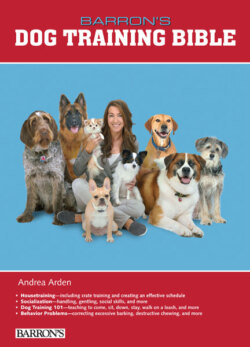Читать книгу B.E.S. Dog Training Bible - Andrea Arden - Страница 16
На сайте Литреса книга снята с продажи.
Leader, Guide, Teacher, or Coach?
ОглавлениеFor the past 25 years or so, there has been a lot of talk in the dog world about being your dog’s leader. Some feel this aptly describes the role we should take with our dogs. Others feel that this word implies a military approach to the canine-human relationship and a need for punitive training techniques.
However, we expect dogs to survive and thrive in a world that is quite foreign to them. Therefore, it seems logical that they would best adjust with a person (or a family) to lead them in the right direction.
Human language is vastly different from the way dogs communicate and our rules are often at odds with normal—and in some cases instinctual—dog behavior (for example, don’t dig, bark, chew, jump up to greet, chase, hump, or eliminate wherever you like). Dogs are not equipped to navigate our world on their own, and leading them through these oftentimes trying experiences should be our goal. A mentally and behavior ally healthy canine companion is a happy follower.
If the word leader is at odds with your sensibilities, you may feel more comfortable referring to yourself as your pup’s guide, coach, or even teacher. Regardless of the word used to describe this position, the job comes down to helping your pup earn a graduate degree as a mannerly, social canine in the human world. So, what does this job description entail? First and foremost, you must formulate a game plan or a curriculum to achieve your training goals (see “Setting Realistic Expectations” on page 4).
